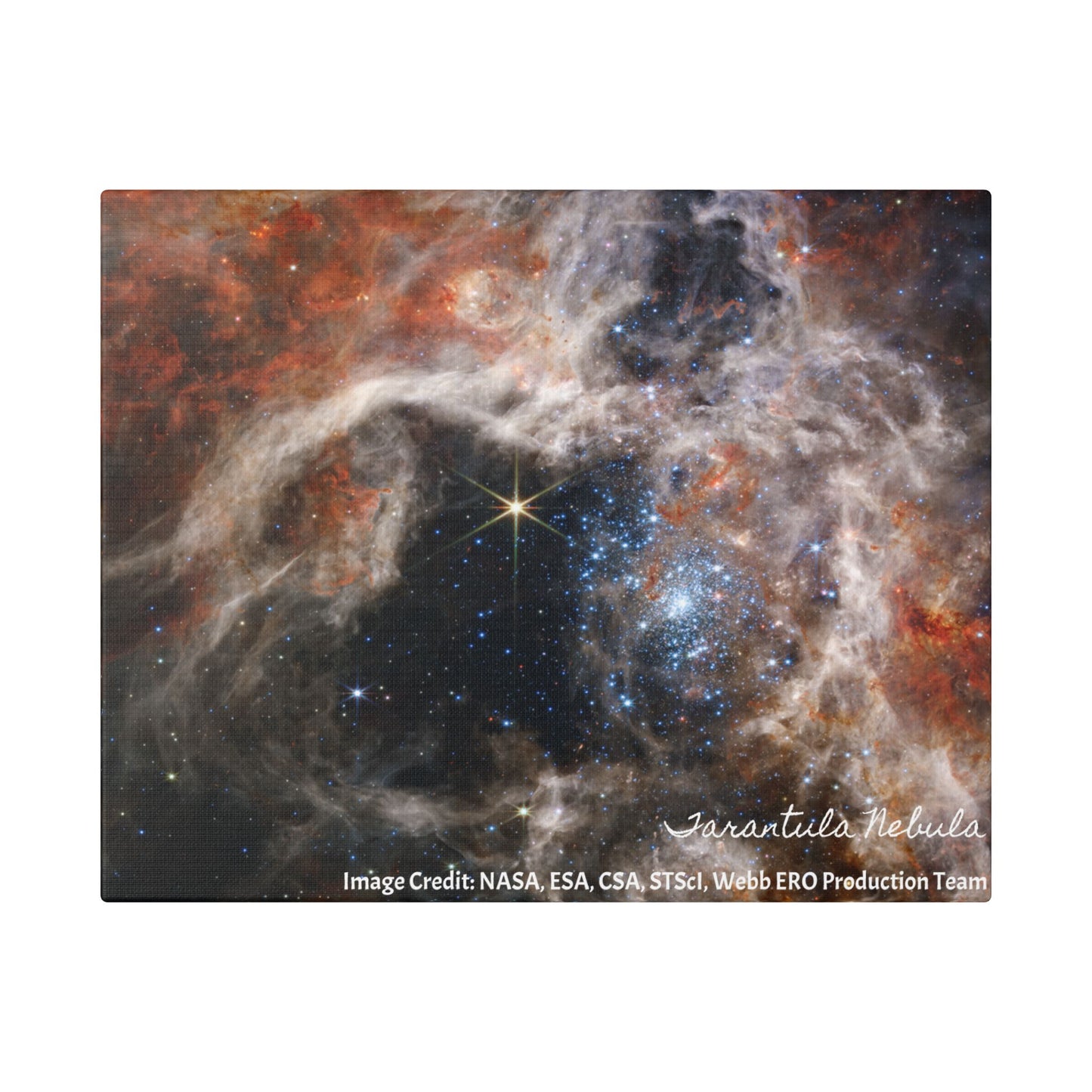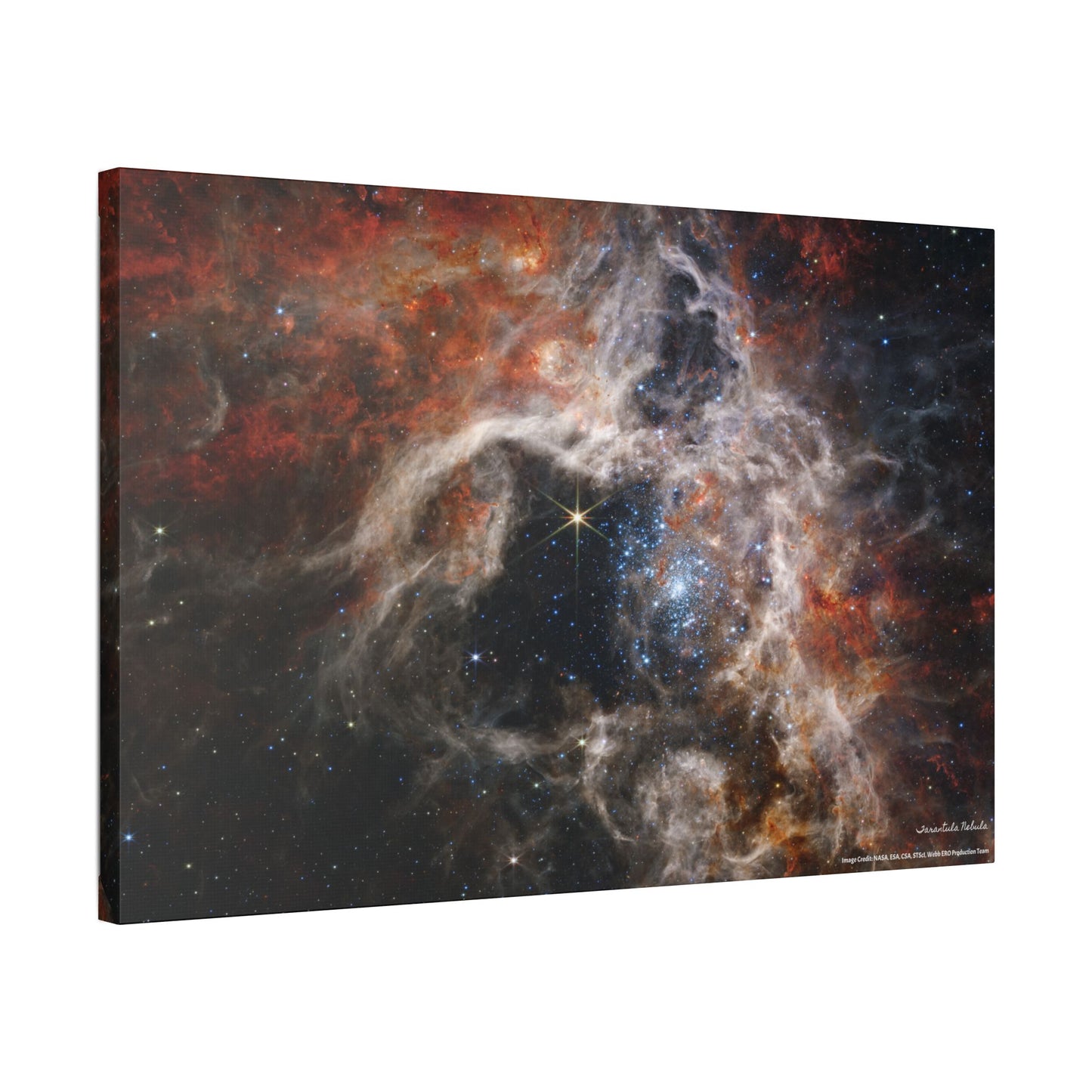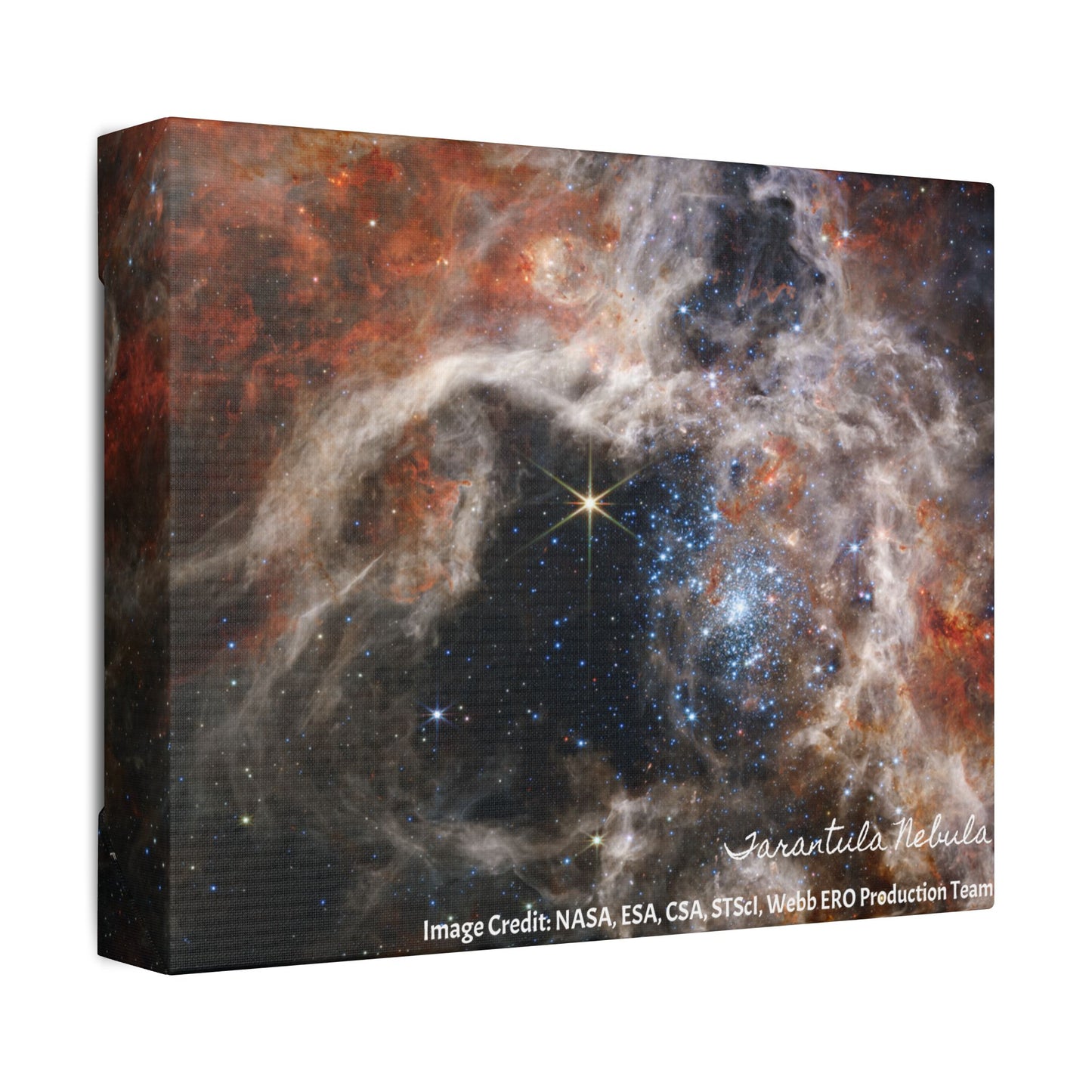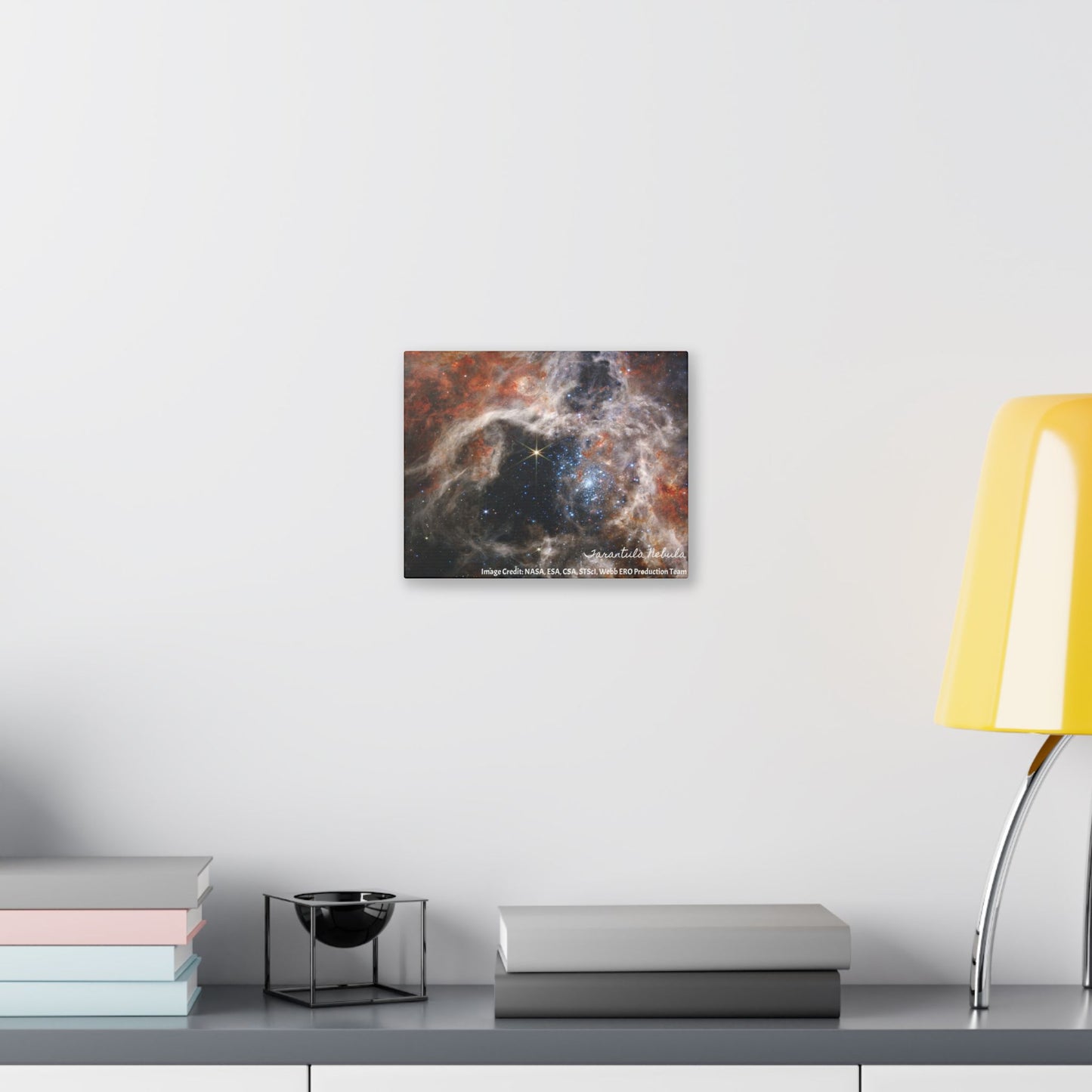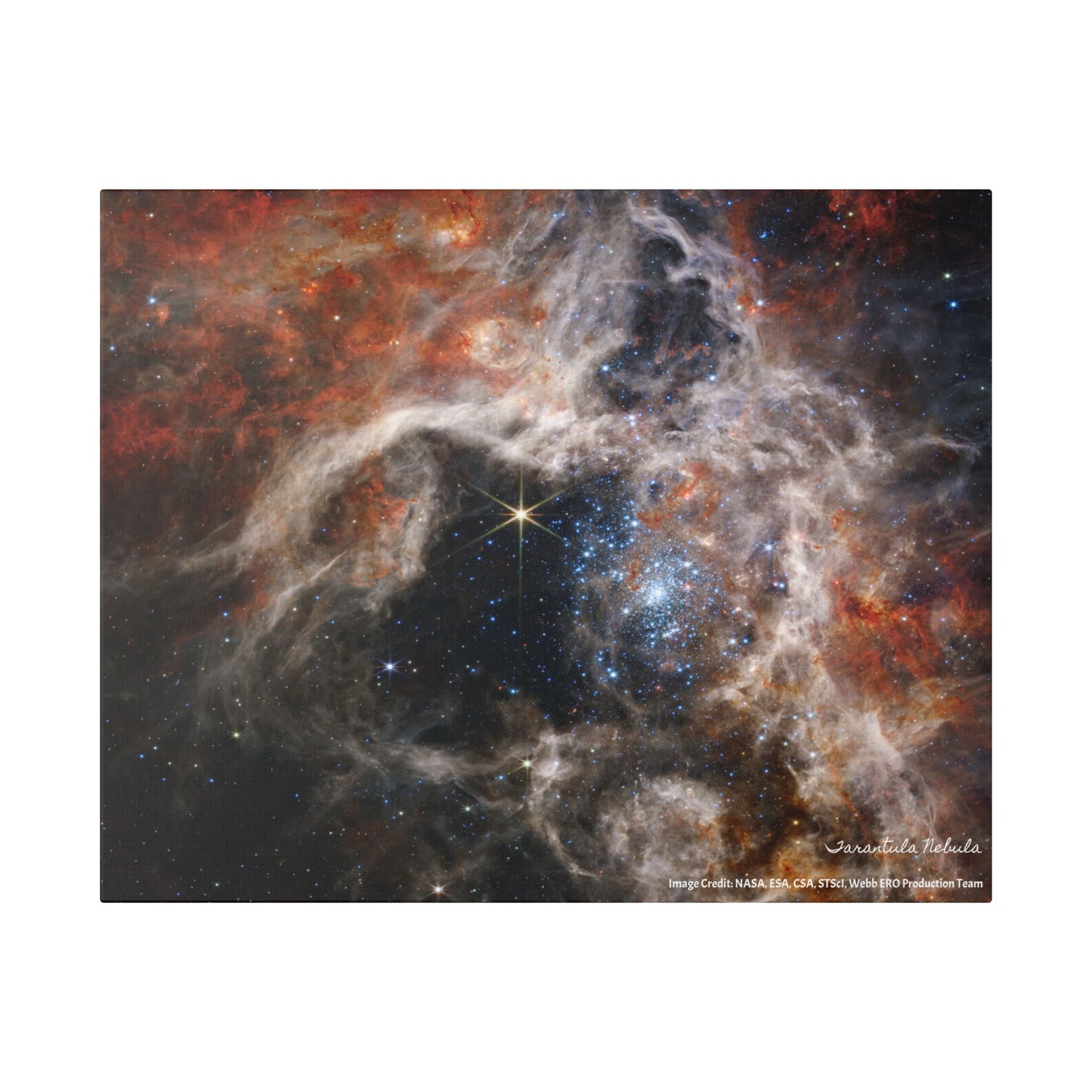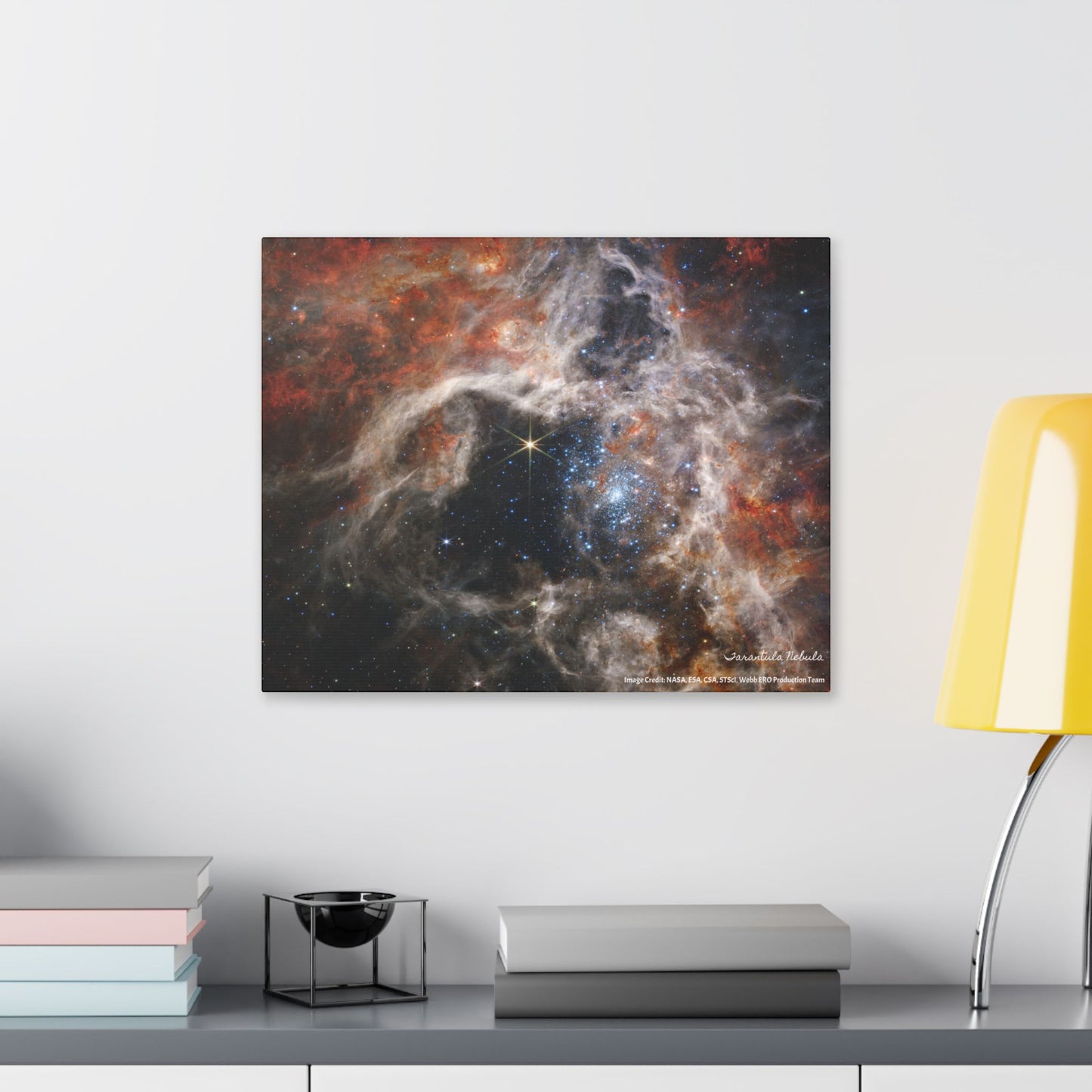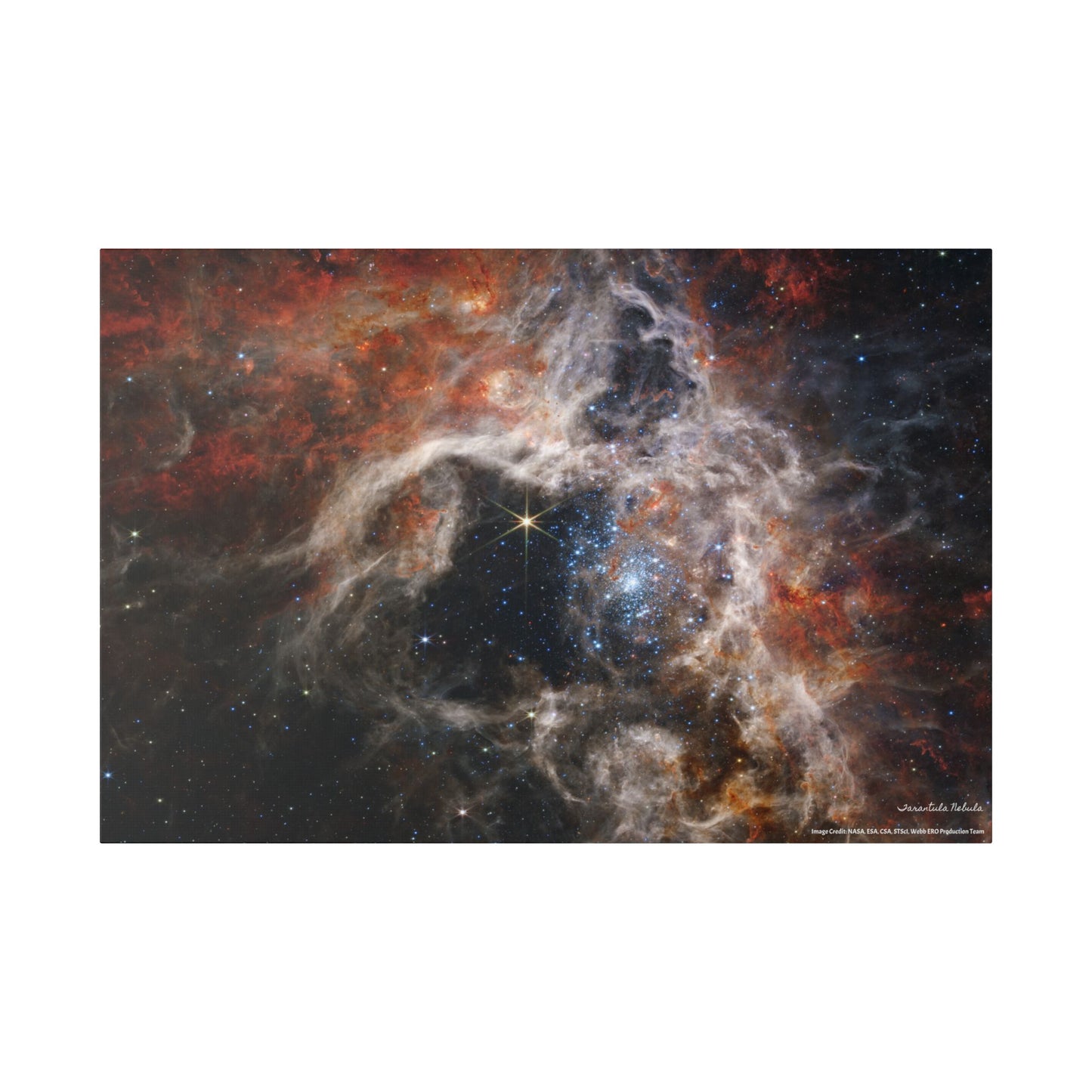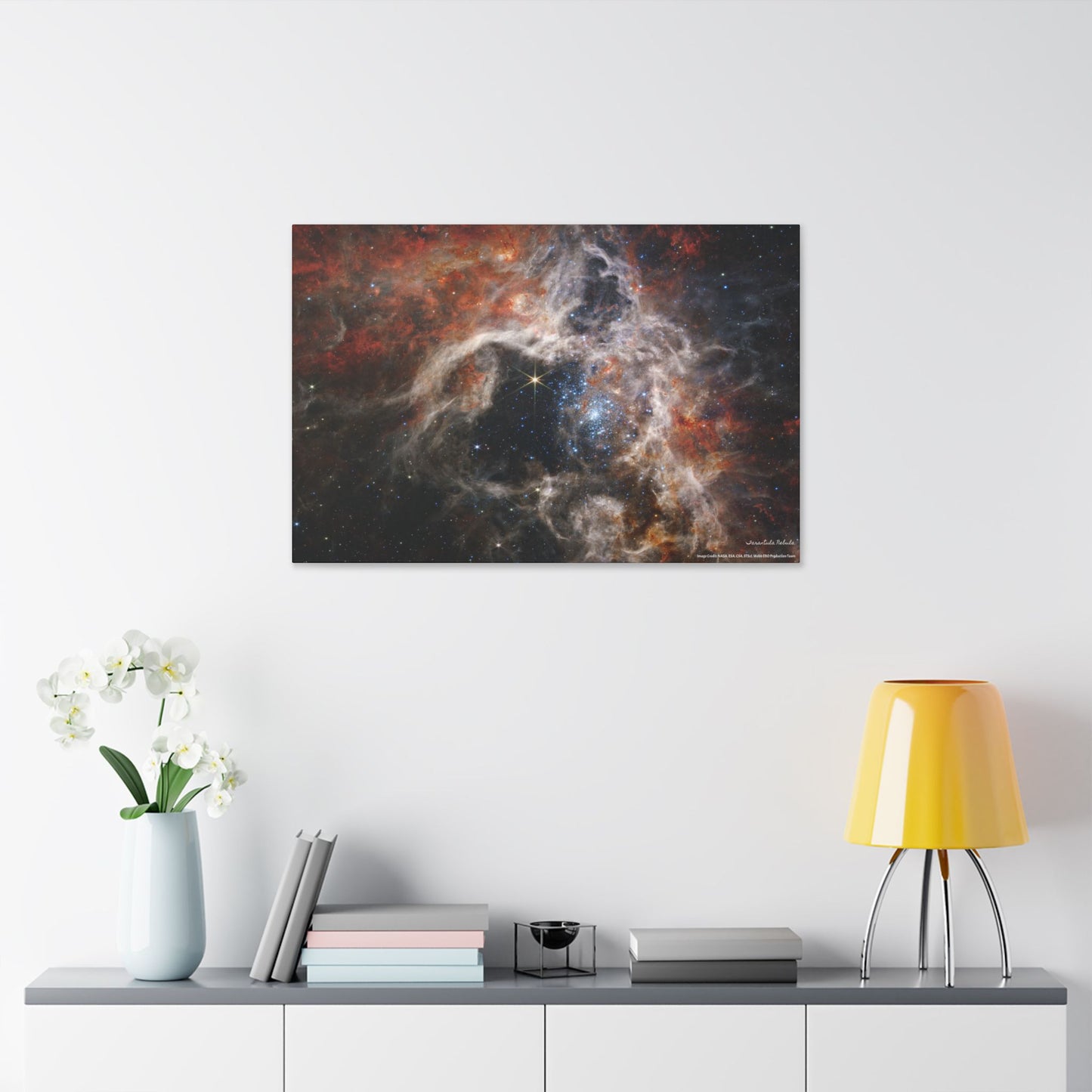Tarantula Nebula, Canvas Wall Art
Tarantula Nebula, Canvas Wall Art
Couldn't load pickup availability
Elevate Your Space with Quality Canvas Art
Transform your home or office into a sophisticated haven with our stunning collection of canvas art prints. Each piece is meticulously crafted using top-tier materials and cutting-edge printing techniques to deliver exceptional clarity, detail, and vibrancy.
Please note that these canvas art prints are created for exquisite indoor display.
Invest in lasting beauty. Shop for our canvas art collection today.
Tarantula Nebula:
In this mosaic image stretching 340 light-years across, Webb’s Near-Infrared Camera (NIRCam) displays the Tarantula Nebula star-forming region in a new light, including tens of thousands of never-before-seen young stars that were previously shrouded in cosmic dust. The most active region appears to sparkle with massive young stars, appearing pale blue. Scattered among them are still-embedded stars, appearing red, yet to emerge from the dusty cocoon of the nebula. NIRCam can detect these dust-enshrouded stars thanks to its unprecedented resolution at near-infrared wavelengths.
To the upper left of the cluster of young stars, and the top of the nebula’s cavity, an older star prominently displays NIRCam’s distinctive eight diffraction spikes, an artifact of the telescope’s structure. Following the top central spike of this star upward, it almost points to a unique bubble in the cloud. Young stars still surrounded by dusty material are blowing this bubble, beginning to carve out their own cavity. Astronomers used two of Webb’s spectrographs to take a closer look at this region and determine the chemical makeup of the star and its surrounding gas. This spectral information will tell astronomers about the age of the nebula and the number of generations of star birth it has witnessed.
Farther from the core region of hot young stars, cooler gas takes on a rust color, telling astronomers that the nebula is rich with complex hydrocarbons. This dense gas is the material that will form future stars. As winds from the massive stars sweep away gas and dust, some of it will pile up and, with gravity’s help, form new stars.
Constellation: Dorado
Dimensions: Image is 7.24 arcmin across (about 360 light-years)
Distance: 170,000 light-years (52,000 parsecs)
Exposure Dates: 2 June 2022
Image Credit: NASA, ESA, CSA, STScI, Webb ERO Production Team
Share
